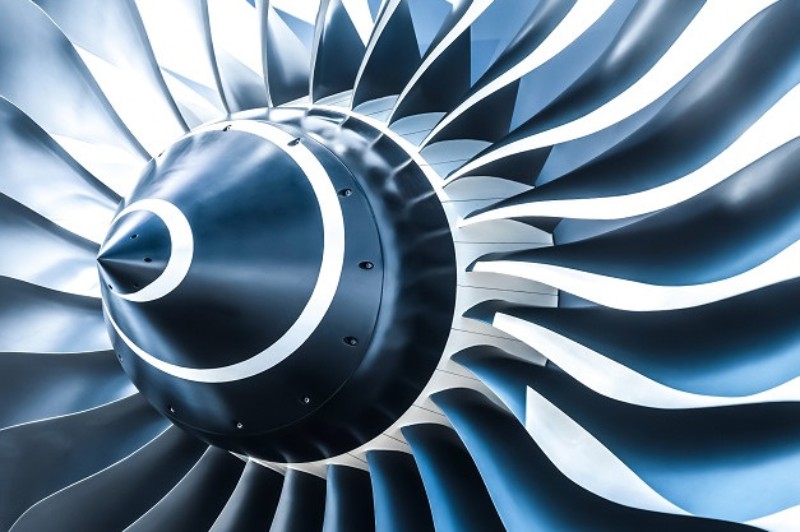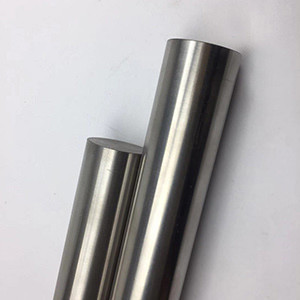In 1948, The United States DuPont company used magnesium method into tons of production of titanium sponge – this marks the beginning of the industrial production of titanium sponge. Titanium alloy is widely used in various fields because of its high specific strength, good corrosion resistance and high heat resistance.
The characteristics of titanium
High strength: 1.3 times of aluminum alloy, 1.6 times of magnesium alloy, 3.5 times of stainless steel, the champion of metal materials.
High thermal strength: the operating temperature is several hundred degrees higher than aluminum alloy, and it can work at 450 ~ 500℃ for a long time.
Good corrosion resistance: acid, alkali, atmospheric corrosion resistance, pitting corrosion, stress corrosion resistance is particularly strong.
Low temperature performance: titanium alloy TA7 with very low clearance elements can maintain certain plastic at -253℃
Chemical activity is big: chemical activity is very high when high temperature, the gas impurity such as hydrogen, oxygen in easy and air happens A chemical reaction creates a hardened layer.
Small thermal conductivity, small elastic modulus: thermal conductivity is about 1/4 of nickel, 1/5 of iron, 1/14 of aluminum, and the thermal conductivity of various titanium alloys is about 50% lower than that of titanium. The elastic modulus of titanium alloy is about that of steel1/2.
Classification and use of titanium alloy
Titanium alloy can be divided into heat resistant alloy, high strength alloy, corrosion resistant alloy (ti-molybdenum, ti-Palladium alloy, etc.), low temperature alloy and special function alloy (ti-iron hydrogen storage material and ti-nickel memory alloy) and so on.
Although titanium and its alloy application history is not long, but because of its superior performance, has won a number of honorable titles. The first award was space Metal. It is light, strong and high temperature resistant, especially suitable for the manufacture of aircraft and various spacecraft. About three-quarters of the titanium and titanium alloys produced in the world today are used in the aerospace industry. Many parts that used to be made of aluminum alloy were made of titanium alloy.
Application of Titanium alloy in aviation
Titanium alloy is mainly used in aircraft and engine manufacturing materials, such as forged titanium fans, compressor discs and blades, engine hoods, exhaust devices and other parts, as well as structural frame parts such as girders and frames of aircraft. Spacecraft mainly use titanium alloy high specific strength, corrosion resistance and low temperature performance to manufacture a variety of pressure vessels, fuel tanks, fasteners, instrument straps, frames and rocket housing. Man-made earth satellite, lunar module, manned spacecraft and space shuttle also use titanium plate welding pieces.
In 1950, the United States for the first time in the F-84 fighter-bomber fuselage heat shield, air hood, tail cover and other non-load bearing components. Since the 1960s, titanium alloy has been used to move from the rear fuselage to the middle fuselage, partly replacing structural steel to make important load-bearing components such as frames, beams, flaps and slides. Since the 1970s, civil aircraft began to use a large amount of titanium alloy, such as Boeing 747 aircraft with more than 3,640 kilograms of titanium accounted for 28% of the weight of the aircraft. With the development of processing technology, a large number of titanium alloys are used in rockets, satellites and spacecraft.
The more advanced the plane, the more titanium it uses. The titanium alloy used in America’s F-14A fighter aircraft accounts for about 25% of its weight; F-15a fighter 25.8 percent; The U.S. fourth-generation fighter jet uses 41 percent titanium, and its F119 engine uses 39 percent, the highest amount of titanium currently used by the aircraft.
Why titanium alloys are widely used in aviation
The top speed of modern aircraft has reached 2.7 times the speed of sound. At supersonic speeds this fast, the plane rubs against the air and generates a lot of heat. At 2.2 times the speed of sound, the aluminum alloy will not survive. High temperature resistant titanium alloys must be used.
When the thrust-weight ratio of aero-engine increases from 4 ~ 6 to 8 ~ 10, and the compressor outlet temperature increases correspondingly from 200 ~ 300℃ to 500 ~ 600℃, the low-pressure compressor discs and blades originally made of aluminum must be changed to titanium alloy.
In recent years, scientists have made new progress in the research on the properties of titanium alloys. The original titanium alloy composed of titanium, aluminum and vanadium has a maximum working temperature of 550℃ ~ 600℃, while the newly developed TiAl alloy has a maximum working temperature of 1040℃.
High pressure compressor discs and blades made of titanium alloy instead of stainless steel can reduce the weight of the structure. For every 10 per cent weight loss, 4 per cent fuel savings can be achieved. For a rocket, one kilogram of weight can increase its range by 15 kilometers.
Analysis of machining characteristics of titanium alloy
First, titanium alloys have low thermal conductivity, only a quarter of that of steel, a thirteenth of that of aluminum, and a quarter of that of copper. Because the cutting area heat dissipation is slow, not conducive to heat balance, in the cutting process, heat dissipation and cooling effect is very poor, easy to form high temperature in the cutting area, after processing parts deformation rebound, resulting in cutting tool torque increase, cutting edge wear fast, reduced durability.
Secondly, the low thermal conductivity of titanium alloy makes the cutting heat accumulation in the small area near the cutting tool is not easy to emit, the friction of the front tool surface increases, it is not easy to discharge chips, the cutting heat is not easy to emit, accelerate tool wear.
Finally, titanium alloy has high chemical activity, and it is easy to react with the tool material at high temperature, forming dissolution and diffusion, resulting in the phenomenon of sticking knife, burning knife, broken knife and so on.


